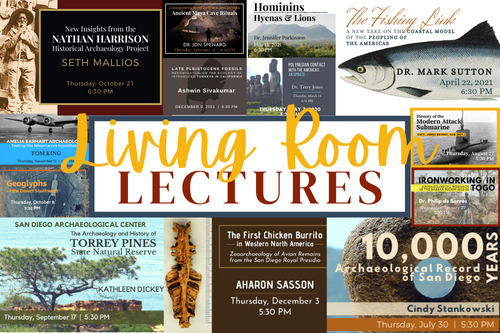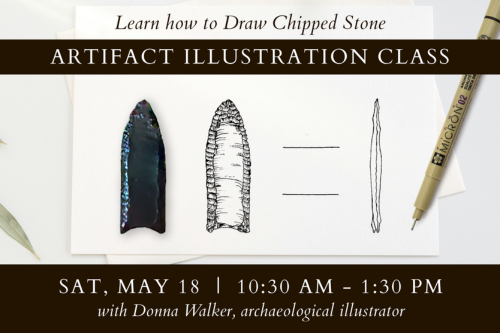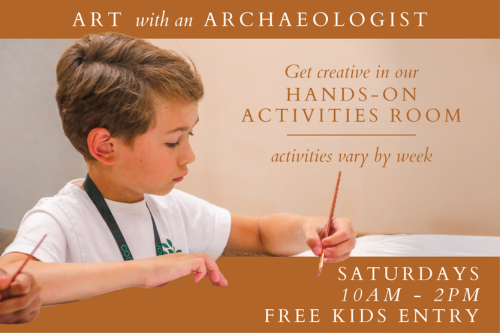
2nd Saturday Lecture Screenings
Join us every 2nd Saturday of the month for two screenings of our Living Room Lectures by archaeologists, experts, and authors. Lecture screenings start at 10:30 AM and 12:30 PM and are included with museum admission. No reservations needed. Seating is first come, first served.
Screening Schedule
May 11, 2024 – no screening
June 8, 2024
10:30 AM – More Than Just Food. More Than Just Faunal Remains. Ethnozoology of the Kumeyaay People by Richard Carrico
For the Kumeyaay people of San Diego County, animals, birds, insects, and other creatures hold a special place in the cosmos and played a variety of important roles. Their embodiment is not always easily visualized because some creatures, large and small, exist in worlds not always seen by most humans, and rarely acknowledged by archaeologists. For many of the native people, there was a time when animals were actually human. In the mythic, ancient time what we now know as humans, or more correctly as mortals, did not exist. The world was inhabited by animals and by animals who were humans but not mortals—these were the Early People and some creatures could embody traits of what came to be known as the mortal humans and animals. Only later in time did the separation grow between animals and humans, and at that time the humans became mortal. This presentation will provide an analysis and discussion of the role and place of non-human creatures within the world and cosmos of the Kumeyaay people of San Diego County.
12:30 PM – Communing with Earth and Ancestors: Ancient Maya Cave Rituals by Jon Spenard
The ancient Maya are perhaps best known for their jungle-covered cities with large plazas and grand temples standing taller than the forests encasing them. These built places are often depicted as the settings of elaborate state rituals where elites would perform their ceremonial duties in front of the masses. Yet important rituals were not performed only in cities. Archaeological research over the last few decades has come to reveal that caves and cave-like spaces were among the most potent and important places for ritual performances by the ancient Maya. They were the places where the ancestors originally emerged from and where they returned to after their passing. They were also portals to where powerful Earth forces, particularly the rain deity, could be ritually accessed and negotiated with. In this talk, Dr. Jon Spenard will discuss his ongoing cave ritual research in Belize with a particular focus on understanding the relationship between cave rituals and the ancient Maya collapse.




